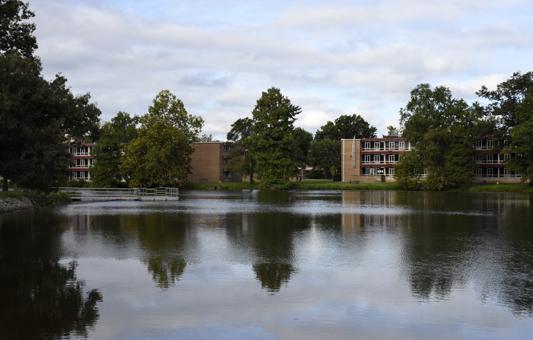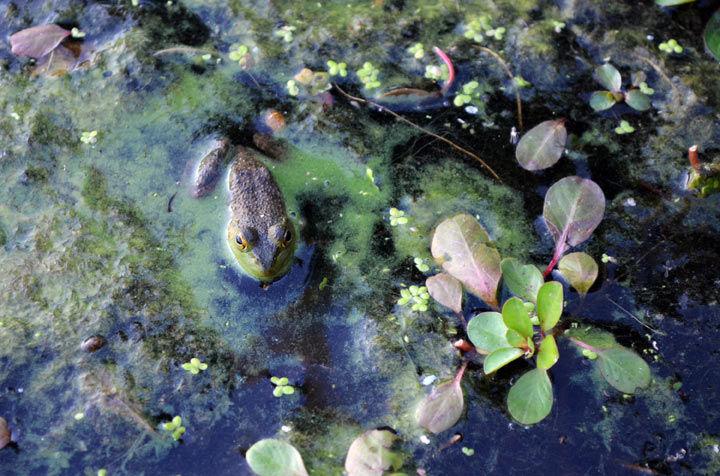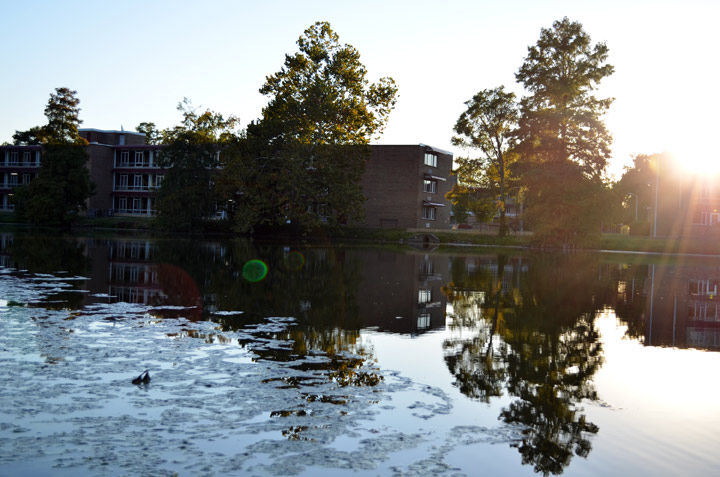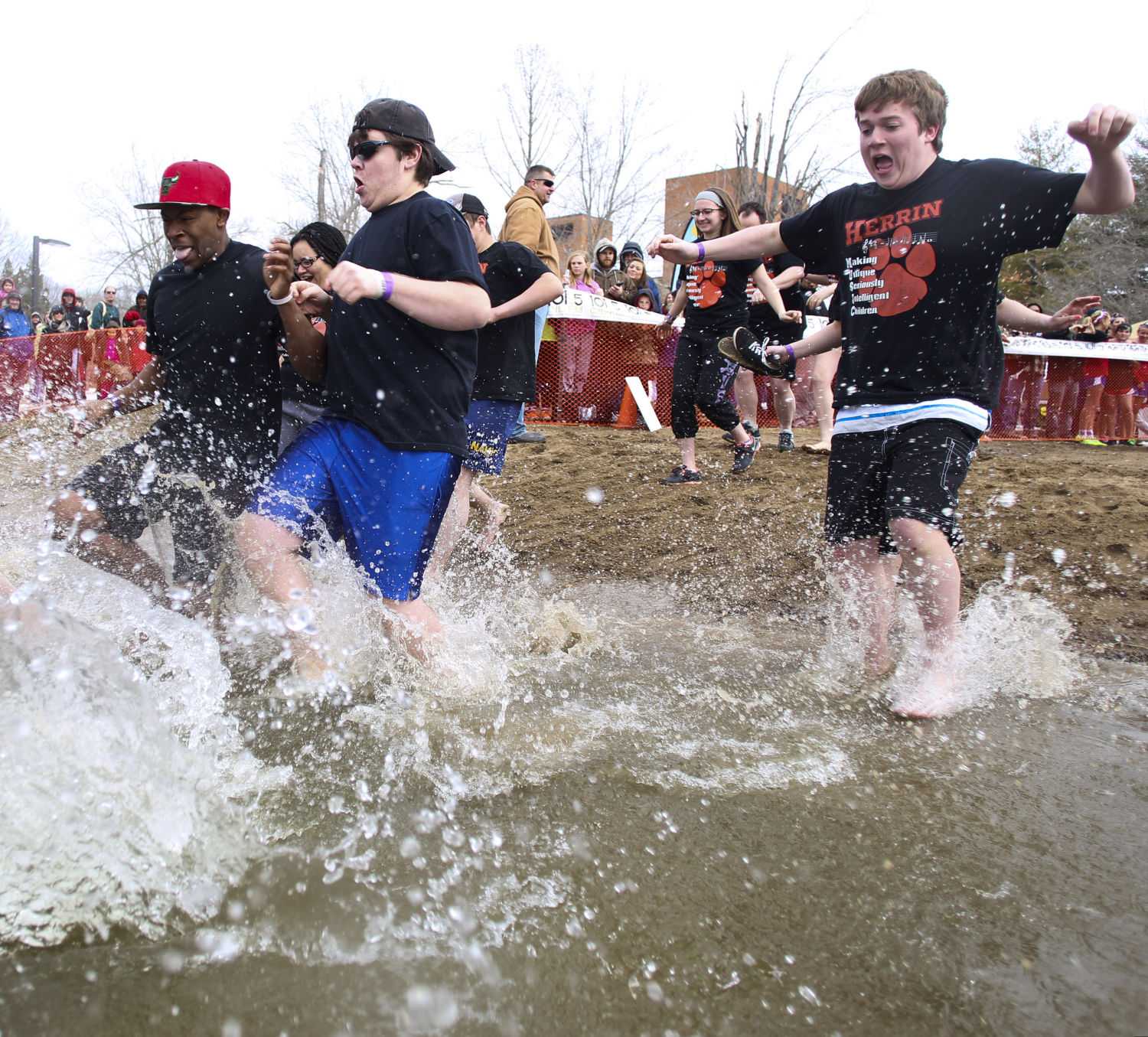SIU begins draining Campus Lake to combat toxic algae

Campus Lake as seen from its north side on Sept. 1, 2016, near Thompson Point. (Athena Chrysanthou | @Chrysant1Athena)
September 2, 2016
SIU officials hope draining Campus Lake will resolve years of toxic algae blooming in the body of water near Thompson Point.
The most recent plan to clean up the lake includes installing siphons — or bent pipes — to partially drain the body of water and remove built up plant nutrients from the shorelines, said Kevin Bame, SIU’s vice chancellor for administration and finance.
Physical Plant temporarily closed the sidewalk and bridge leading over the dam on the lake’s east side Wednesday to begin placing the siphons.
Advertisement
The university has begun pumping water out of the lake — closed since late June because of high levels of the algae, also known as cyanobacteria. The water will be pumped into nearby Piles Fork Creek, Bame said.
“This is going to be a very gradual process,” Bame said of the drainage. “It is at least going to take 30 days to lower the water six to eight feet, revealing 20 acres of shoreline showing.”
From there, it will take about 12 to 15 months for the water to return to its normal level, he said.

The lowered water level will also expose more of the plant buildup that helps feed the toxic algae, zoology professor Marjorie Brooks said as she removed a leaf-filled handful of bluish-green muck from the lake Thursday.
“This algae may look like it is just on the surface, but it’s not,” she said. “It is built up and in some cases can reach as far as three to six feet deep.”
Bame said SIU’s administration searched for many different solutions to help the lake, including the use of chemicals, but decided syphoning would be the best and most eco-friendly solution.
Brooks, who studies freshwater sources, said she agrees with the decision.
Advertisement*
“Draining the lake by syphons is actually quite brilliant because the syphons get the water flowing,” Brooks said. “Once it’s flowing, the syphon automatically pulls it through and therefore, you save on electricity.”
In total, the drainage and nutrient removal is going to cost about $350,000 — funded by Physical Plant, the SIU Foundation and University Housing, Bame said.
This isn’t the first time the university put money into trying to end the lake’s toxicity.
In the past year, a series of tests were conducted on the lake in the hopes to find the source of an unusually high presence of fecal matter believed to be contributing to the cyanobacterial growth.
At one point it was suspected the 60-year-old Thompson Point sewer pipes were the culprit behind the concerning presence of sewage.

Last fall, in an attempt to indicate areas where there could potentially be leaks in the pipes, the university spent $63,500 on dye, smoke and camera tests.
The test results did not indicate any problem with the pipes that would explain the E. coli levels, but the cyanobacteria blooms persisted.
This June, for the third year in a row, SIU closed the lake after tests revealed unsafe levels of toxic algae, Bame said.
Even though this project cannot guarantee a long term solution and completely fix the lake of this condition, there are ways to help maintain the lake after the substances are removed, Brooks said.
“We currently have a couple of aerators in the lake and they are pulling water from a deeper level of the lake, to mix air flow and help turn the water over,” Bame said. “Marjorie Brooks also suggested fountains, which we will continue to look at, but as of right now, we are taking everything one step at a time.”
For now, signs advising fishers and pets to avoid the water remain scattered around the shores of the 43-acre lake.
“There are very complex molecules in cyanobacteria, which can potentially be very dangerous,” professor emeritus Daniel Nickrent said. “Some students received rashes from contact with the water for long periods of time, but it also can potentially harm the student’s liver and kidneys.”

Even though the pungent odor produced by the alga has not been as strong as it’s been during hotter, drier weather, the lake closure still doesn’t go unnoticed.
“I have lived here my whole life, but I have been at the lake more recently now that Pokémon Go is out,” Carbondale community member John Caraker said. “I remember when we could rent boats to go on dates or go fishing, and when you could actually eat the fish.”
Staff writer Shyanne Jasper can be reached at [email protected] or on Twitter @sjasper_DE.
To stay up to date with all your SIU news, follow the Daily Egyptian on Facebook and Twitter.
Advertisement







